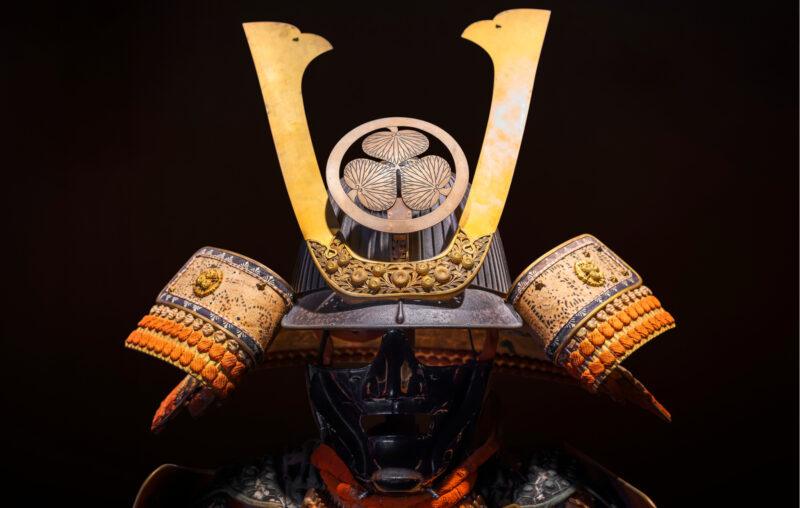Lessons from the Tokugawa Shogunate 1603 – 1868

Japan’s Tokugawa Shogunate is best remembered outside Japan as a 265-year period of isolation and stagnation, though that assessment is superficial and unfair, or at best, incomplete. Economists often cite Japan under this regime as an example of the negative impact of autarky—a condition of prohibiting international trade and foregoing its benefits. Autarky deprives a nation of additional foreign demand for its output, and similarly prevents the country from benefiting from cheaper imported goods. To the extent that the Shogunate’s policy of isolation limited international trade and the extent of the market where Japanese were permitted to trade, it made the Japanese both poorer and worse off. But by making Japan worse off, this means worse off than the country would have been otherwise, with all other things held fixed. Since we can’t know what would have happened and how Japan would have evolved in the absence of the Shogunate, it becomes entirely speculative to evaluate the regime’s record.
In fact, the Shogunate established peace and stability after a period of destructive civil war, which in turn allowed commerce and domestic industry to flourish. As an island nation, trade was already limited by the relatively high cost of shipborne transport to and from China or countries farther away, and from that perspective, the loss of trade was relatively insignificant. It would be far more burdensome for a land-locked country to refrain from trading with its nearest neighbors, especially if they were not separated by barriers like mountains or bodies of water that would increase the cost of transport. Nevertheless, England is similarly an island nation, and benefited tremendously from trade with its closest European neighbors, and with trading partners around the globe. Japan had to forgo many of the benefits of trade until the Meiji restoration in 1868.
There can be no question that Tokugawa Ieyasu, the founder of the Shogunate, was one of the great men of history, perhaps doing more to shape the Japanese character than anyone else. The impact of the Shogunate was one of stability and unification over the course of the 1600s. The conventional view was that the policy of isolation prevented Japanese society and technology from evolving naturally or from adopting any progress from abroad. This view is most accurate after 1800 toward the end of the Shogunate, when it had increasingly outlived its usefulness as a political institution. However, at the beginning, the Shogunate proved highly effective in maintaining civic order, suppressing lawlessness, and fostering a cooperative relationship between Buddhism and Japan’s indigenous Shinto religion, though suppressing Christianity.
The establishment of the Tokugawa Shogunate resolved a period of protracted civil war and anarchy that followed the fall of the preceding Ashikaga Shogunate. In these wars, competing daimyos—landholding great lords—fought for supremacy. Tokgawa Ieyasu established the Shogunate by defeating his enemies at Sekigahara and awarding the largest feudal domains to loyal daimyos who had supported him. Opposing daimyos were either deposed entirely, or in most cases, given smaller and less desirable domains, often remote from their traditional seats. These were geographically configured, so that the suspect daimyos were separated from each other so there would be no opportunity for them to combine and conspire against the Shogunate. This kind of intrigue and treachery had plagued previous rulers, but Ieyasu’s system of checks and balances proved an elegant and enduring solution. Ieyasu granted his own family relatively modest domains as daimyos, strategically enhancing their dependence on the Shogunate. About a quarter of Japan’s grain-producing land was reserved for the Shogunate’s needs, limiting the need to rely on the daimyos for income, though as time elapsed, inflationary monetary policy undercut the effectiveness of this arrangement.
Each daimyo had to spend every other year in residence at the Shogun’s fortress in Edo, an insignificant fishing village which subsequently grew into one of the great cities of the world, renamed Tokyo—the Eastern Capital—at the end of the Shogunate. In off years, when half the daimyos returned to their domains, their families remained behind in Edo, effectively acting as hostages for the daimyo’s good conduct. In return for their loyalty to the Shogun, the daimyos could not be overthrown, because the Shogunate would not recognize a usurper or outlaw.
Ieyasu’s Edo Castle was the largest in Japan, and was built at the daimyos’ expense. The castle burned in the great Meireki fire of 1657 that destroyed most of the city. Tradition holds that the fire was accidentally started by a priest attempting to burn a cursed kimono, where several young women had died before they could wear the garment. High winds and a severe drought allowed the flames to spread rapidly. The keep was never rebuilt and its foundation remains within the grounds of the Imperial Palace. The Shogun’s compound was heavily fortified with several concentric walls and moats, forming a labyrinth of passages and fortifications, including luxurious quarters for the daimyos, their families, and retainers.
There can be little question that the political system Tokugwa Ieyasu devised and implemented effectively addressed Japan’s chronic need for order and stability, allowing culture and commerce to flourish and hastening urbanization even though it preserved the feudal system. Japan’s traditional caste system was reinforced with the daimyos and samurai on top, and the common people, consisting of farmers, craftsmen, and merchants on the bottom. Merchants were effectively outside this class system, giving them lesser status, but generally freeing them from taxes. Farmers kept 60% of their crops, with their daimyo receiving 40%. Because of their wealth, merchants were sometimes compelled to make forced loans, but otherwise their income was not generally taxed. The Shogun’s personal domains were extensive, significantly greater than those of any daimyo, and included Japan’s principal gold mining sites. The daimyos were not assessed any taxes by the Shogunate, but had to perform military service and contribute their tenants’ corvee labor for public works.
Christianity in Japan has an almost unique cultural status for a minority religion. Very few Japanese today are practicing Christians, though about two-thirds of Japanese couples are married in Christian ceremonies. Japanese Christians who remained faithful in the face of rigorous suppression under the Shogunate are highly admired. The Catholic patron of missions is the Jesuit St. Francis Xavier, who established missions in Japan, and the twenty-six martyrs crucified in Nagasaki in 1597 are honored by the Catholic, Anglican, and Lutheran churches. In the face of forcible suppression, Japanese Christians were equally revered for accepting martyrdom or feigning renunciation so they could continue to practice in secret. This outward renunciation might be likened to the conduct of Buddhist Bodhisattvas, who delay attaining the full enlightenment of a Buddha so they can guide others to enlightenment. This is seen as an act of mercy by a generous and truly enlightened person.
Contrary to popular belief, the Shogunate did not prohibit foreign trade entirely, but permitted trading houses from China and the Netherlands to import and export goods through Nagasaki, with the principal export being rice. This strictly limited trade, though the Shogunate collected huge tariff revenues from this trade monopoly, but shared the revenue with daimyos of the great Satsuma and Tshushima clans. The Shogunate initially encouraged trade, but adopted more restrictive policies in 1635 under the third Shogun Tokugawa Iemitsu, including further suppressing Christianity.
The benefits of peace and stability under the Shogunate, which allowed domestic commerce, industry, and culture to flourish, likely trumped the benefit from potential gains from trade in the 1600s, which helps explain why Iemitsu implemented isolationist policies. However, by the 1800s Japan had become technologically and economically backward compared to the rest of the world. The Shogunate had also become too dependent on the revenue from its monopoly on the limited trade it permitted with Chinese and Dutch merchants through the port of Nagasaki. Their dependency on this revenue source made succeeding Shoguns reluctant to abandon the status quo.
Because of Nagasaki’s somewhat peripheral location at the southern end of Japan, on the far side of the inland sea from the rest of the country, the extra transport costs also made imported goods artificially expensive, over and above the tariffs that provided revenue for the Shogunate. This limited the benefits of what international trade the Shogunate permitted. To some extent isolationist policies protected domestic industries from foreign competition, but as we’ve seen since the end of World War II, this kind of trade protection is not something Japanese industry necessarily needs, and since the war, Japan’s trading partners, especially the United States, have subjected Japan to more trade restrictions than nearly other industrialized country.
The principal monetary unit of medieval Japan was the koban, an oval gold coin originally fixed at the weight of one ryo, about 15.5 grams of gold. The koban was minted both by the Shogunate in Edo with many daimyos minting their own, usually smaller or with a lower gold content. Kobans were often counterfeited throughout the Tokugawa era. The Shogunate implemented periodic money reforms, nearly always debasing the koban. By the 1800s, merchants and foreign traders preferred older counterfeit kobans because they contained a higher gold content than newly minted Tokugawa coinage.
At $1,800 to the ounce, the original 1 ryo koban would be worth about $900 today (2022), so it was roughly equivalent to a $10 gold coin. Successive devaluations of the koban did not result in adjustments to traditional tax rates, so the Shogunate would realize a short-run windfall from its debasements, but always at the expense of a longer-term reduction in real revenue. The Shogunate either failed to appreciate the long-run impact of their debasement policies, or perhaps were too constrained by short-run considerations. This inevitably resulted in a need to devalue further, and the inflation eventually impoverished many daimyos and the whole samurai class, and the resulting discontent with the Shogunate probably contributed to the end of the regime. Because their taxes did not rise, farmers, artisans, and merchants generally benefited, with some amassing great wealth.
Because medieval Japan was a relatively closed economy, the koban’s actual exchange value may have been much higher than its gold content would suggest, and this may have helped justify successive debasements. The inability to import additional gold probably made it rarer and more valuable in Japan than elsewhere. This would have enabled a relatively small amount of gold to serve the needs of the whole economy, and most people used rice for exchange anyway. The relatively high value of gold in Japan also discouraged its removal from the country. Clearly the Shogunate’s monetary policy was inflationary and irresponsible, and the Meiji government replaced the koban with the yen with the New Currency Act of 1871.
The Shogunate came to an end after the US mission led by Commodore Matthew Perry visited in 1853 and 1854, demonstrated incredible technological superiority, and all but demanded an end to isolation. In fact, the reigning thirteenth Shogun Tokugawa Iesada was ill at the time of Perry’s first visit, and the government was somewhat indecisive in responding. Perry led his fleet of steam frigates into Edo Bay (now Tokyo Bay) and threatened to shell the town of Uraga near Edo if the Shogun did not send a representative to negotiate. Government officials initially insisted that the squadron withdraw over 600 miles southwest to Nagasaki, on the far side of Kyushu. Perry refused to leave until the government accepted a letter from him, after which he agreed to withdraw to Hong Kong and return for an answer in one year. Perry’s squadron returned only six months later, possibly intending to catch the government by surprise. Nevertheless, they negotiated the Kanagawa Convention, also known as the Japan-US Treaty of Peace and Amity. Over succeeding years, the Shogunate negotiated similar concessions with various European powers.
In 1857 the fifteenth and last Shogun Tokugawa Yoshinobu resigned his authority to the fifteen-year-old and newly enthroned Emperor Meiji, though the last Shogun lived in retirement until 1913. In 1858 the US negotiated an explicitly commercial agreement, the US-Japan Treaty of Amity and Commerce, with similar trade concessions following in short order to the UK, Russia, France, and the Netherlands. This broke the Shogunate’s remaining trade monopoly, depriving the government of one of its largest sources of revenue. Emperor Meiji symbolically moved the imperial court from its traditional seat in ancient and storied Kyoto to Edo Castle, which became the heart of modern Tokyo.
Under the Meiji Restoration, Japan became a constitutional monarchy on the Prussian model with a strong executive, though the nobility which descended from the samurai class had a very strong influence. Unfortunately, this contributed to a culture of militarism and imperialism, ultimately leading to World War II.
Japan modernized with incredible rapidity, transitioning from a technologically-backward feudal economy to a leading industrial and world power in just a generation. Several thousand miles of railroads and extensive heavy industry were constructed by 1900, though even at that late date the Imperial Navy was still ordering its most technologically advanced battleship, the Mikasa, from the British firm Vickers. In the 1904-1905 Russo-Japanese War the Mikasa served as Admiral Togo’s flagship at Tsushima, where Togo destroyed a Russian fleet that had cruised all the way from the Baltic. She is preserved as a museum ship in Yokosuka, Tokyo. From 1912 on, all Imperial Navy ships were built domestically, mainly at Kure Naval Arsenal in Hiroshima.
Japan had one of the world’s largest and most modern navies from before World War I to the end of World War II. The Imperial Navy was also an important pioneer in naval aviation. Japan and the U.S. were allies in World War I and arrived at similar approaches for complying with the 1922 Washington Naval Treaty, limiting the number of battleships and battlecruisers each country could possess. The U.S. response was to convert the half-completed battlecruisers Lexington and Saratoga to aircraft carriers. Similarly, the Imperial Navy redesigned the half-completed battlecruiser Akagi and battleship Kaga as carriers. These four ships were the largest and fastest carriers operated by any navy at the start of World War II, and were much more valuable as carriers than they would have been as originally designed. The Kaga and the Akagi both participated in the attack on Pearl Harbor in 1941, and both were lost at Midway in 1942. The Lexington was lost in the Coral Sea in 1942 and the Saratoga was destroyed as an atom bomb target at Bikini in 1946, along with the Nagato, Japan’s only battleship to survive the war.










